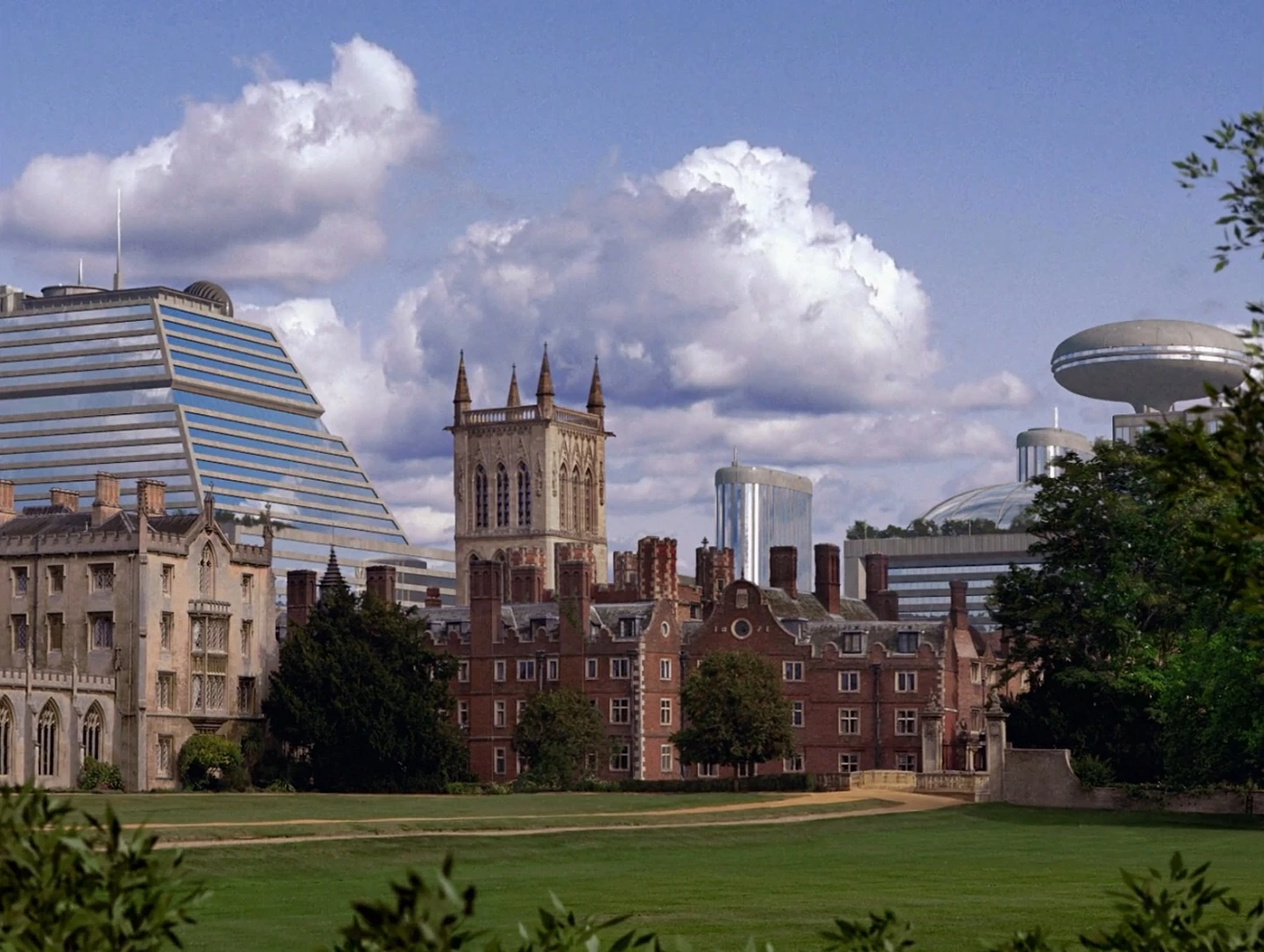
Cambridge University was an ancient and prestigious university located in England on Earth which remained in existence well into the 24th century.
Throughout its history, Cambridge had been the teaching home of some of Human history's greatest scientists, including Sir Isaac Newton and Stephen Hawking, both of whom held the honored position of Lucasian Chair of mathematics.
In an unknown, alternate future timeframe, Data also sat among those greats. In this timeline, Cambridge University was known to have a biometrics lab. Another professor at that point was Rippert. (TNG: "All Good Things...")
Background information
According to the Star Trek Encyclopedia, 4th ed., vol. 1, p. 114, Cambridge University was "...founded in the early 12th century in Great Britain. Cambridge has been a major center for the sciences since the Renaissance. Much important work has been done there, including theories of physics and optics including Isaac Newton's Opticks, Dirac's theories on the existence of positrons and Stephen Hawking's quantum theory of gravity."
Cambridge University, as it appears in "All Good Things...", was a matte painting created by Industrial Light & Magic matte artist Eric Chauvin. The initial plan for its creation was for Paramount to provide Chauvin with archive footage of Cambridge, behind which Chauvin would then paint a modern city. However, the footage was of poor quality, so Chauvin obtained some photographs of Cambridge from a friend who lived in England. He used these images as a reference.
In an effort to make the matte painting look as believable as he could, Chauvin incorporated several moving elements in the shot, such as wind-swept clouds and trees as well as a futuristic hovercar that whizzes across the painting's foreground. "I based the trees on those in the photographs and used Macintosh software to animate them so it looks as though they are blowing in the wind," Chauvin explained. "It's a very subtle thing, but when you combine it with the clouds and the hovercar it really brings a lot of life to the painting."
Chauvin designed another view of the university that, to create as much movement as possible, included crowds of people, birds in flight and a flag fluttering in the breeze, but this was not incorporated into the final edit of "All Good Things...". (Cinefantastique, Vol. 25, No. 6/Vol. 26, No. 1, p. 73) For the remastered version of the episode, Max Gabl re-created Chauvin's work in HD. (Star Trek Encyclopedia, 4th ed., vol. 1, p. 114)
Ronald D. Moore, Brannon Braga, and Roger Lay, Jr. were impressed with the exterior shot of Cambridge University that was ultimately included in "All Good Things..." (All Good Things (Blu-ray) audio commentary) With similar enthusiasm, Richard James noted about the university, "[It] was a big set, and was very handsome." (The Official Star Trek: Voyager Magazine issue 1, p. 72)
In Data's library, there was a copy of A Brief History of Time by Stephen Hawking. (Encyclopedia, note to main entry "Lucasian Chair", 4th ed., vol. 1, p. 490)
External links
- Cambridge University at Memory Beta, the wiki for licensed Star Trek works
- Cambridge University, official website
- Cambridge University at Wikipedia